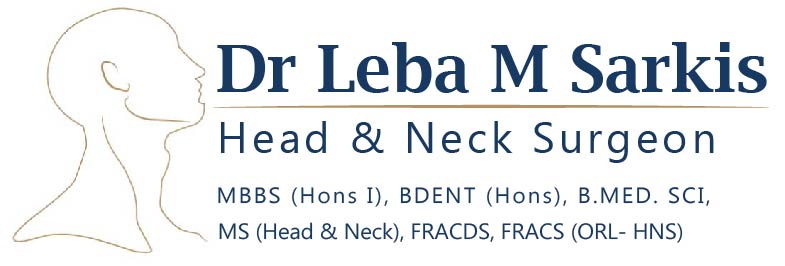Salivary Gland & Sialdenoscopy
Dr. Sarkis is dual fellowship trained Head and Neck Surgeon and has a special interest in the treatment of both benign and malignant conditions of the salivary glands. The oral cavity contains 3 major salivary glands including the parotid gland (in front of the ear canal), submandibular gland (just under the jaw) and the sublingual gland (under the tongue in the floor of the mouth). There are also minor salivary glands located throughout the palate and the buccal mucosa inside the cheek.
The salivary glands produce saliva which contains the enzyme amylase that helps us digest food that enters the mouth. They further allow lubrication during the oral phase of swallow and protect us against bacteria through their antimicrobial properties as the first line of defense in the digestive tract.

Salivary Gland
1. parotid gland
The largest of the salivary glands and located just in front of the ear and over the upper part of the jaw. The most common benign tumours to arise in the parotid gland are pleomorphic adenomas which can occur at any age and present with a painless lump but generally require removal given they carry a small risk of malignant transformation. Warthins tumours are the second most common benign tumour that occur most commonly in older males who are smokers and are found in the tail of the parotid gland. In Australia the most common malignant tumours of the salivary gland are metastatic squamous cell carcinomas (skin cancer) caused by a previous skin cancer that has spread to the parotid gland which contains within it, the draining lymph nodes.
2. the submandibular gland
The submandibular gland is a smaller gland found just under the jaw line on both sides of the upper neck. These two glands are responsible for the high majority of resting salivary flow and are drained by a small duct called Wharton’s duct which drains into the mouth at the front of the oral cavity under the tongue. The long tortuous path of Wharton’s duct predisposes this gland to salivary duct stones. This often presents as recurrent swelling just under the jaw line associated with meals.
3. The sublingual glands
The sublingual glands are the smallest of the major salivary glands and are located in the floor of the mouth under the tongue. One of the more common pathologies seen with the sublingual glands is a ranula secondary to leakage of saliva and mucus into the floor of the mouth producing a swelling under the tongue or in the upper neck. Treatment requires removal of the causative gland which is performed via a transoral incision.
Treatment options
Dr Sarkis’ practice is dedicated entirely to head and neck oncology and so he regularly performs salivary gland surgery for both benign and malignant cancers. He is also a reconstructive surgeon and therefore should the need arise, he will discuss with you reconstructive options facilitating restoration of function following removal of diseased glands.
Reconstructive options include:
- Dermofat graft – often taken from the abdomen as a small portion of fat which will facilitate restoration of facial contour following removal of a benign tumour such as a pleomorphic adenoma.
- Regional flap – Submental flap – which is a skin island taken from underneath the chin to provide skin to close a defect generally for a malignant cancer of the parotid gland that requires skin to fill a defect.
- Free flap – which is a transplant of skin and/or muscle taken from another part of the body most commonly the thigh (ALT flap) or back (TDAP flap) to restore facial contour following removal of a large malignant cancer. This is a delicate procedure and requires microvascular reconstruction.
Salivary gland stones
Salivary gland stones are calcified deposits of predominantly calcium phosphate that occur most commonly in the submandibular ducts due to its more tortuous path and the more viscous mucus secretions of the submandibular gland. They most commonly affect middle aged men. Patients often presents with recurrent symptoms of swelling of the submandibular gland (sialadenitis) after food, with associated pain in the floor of the mouth and upper neck. When they affect the parotid gland, swelling of the area in front of the ear occurs and often requires a course of antibiotics. Patients may also notice a foul taste in their mouth.
The most common investigation to detect salivary gland stones is a CT scan as it allows detection of the location of the stones and helps determine whether multiple stones are present. It also aids in guiding the surgical approach.
Removal of submandibular and parotid stones requires either sialadenoscopy or open surgery and Dr. Sarkis will discuss each of these options with you.
Sialadenoscopy
Sialadenoscopy is a minimally invasive technique that involves the introduction of a small camera (1.1-1.3mm) into the opening of the duct to allow direct visualisation of salivary duct stone and retrieval with a basket. It avoids the need for a transoral or neck incision and patients generally go home the same day. Dr Sarkis prefers sialadenoscopy in the first instance as it is highly successful in stones smaller than 5mm with minimal morbidity. Furthermore it allows direct visualisation and irrigation of the salivary gland duct and delivery of medication such as steroids in chronic inflammatory conditions. It can be used effectively for stones involving both the submandibular and parotid gland.
